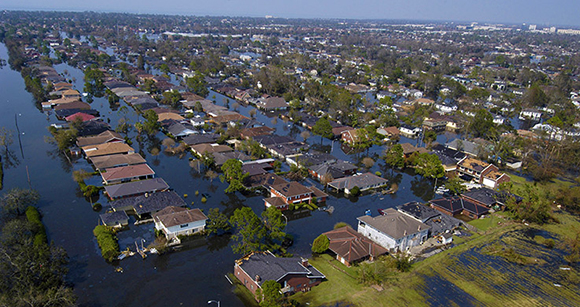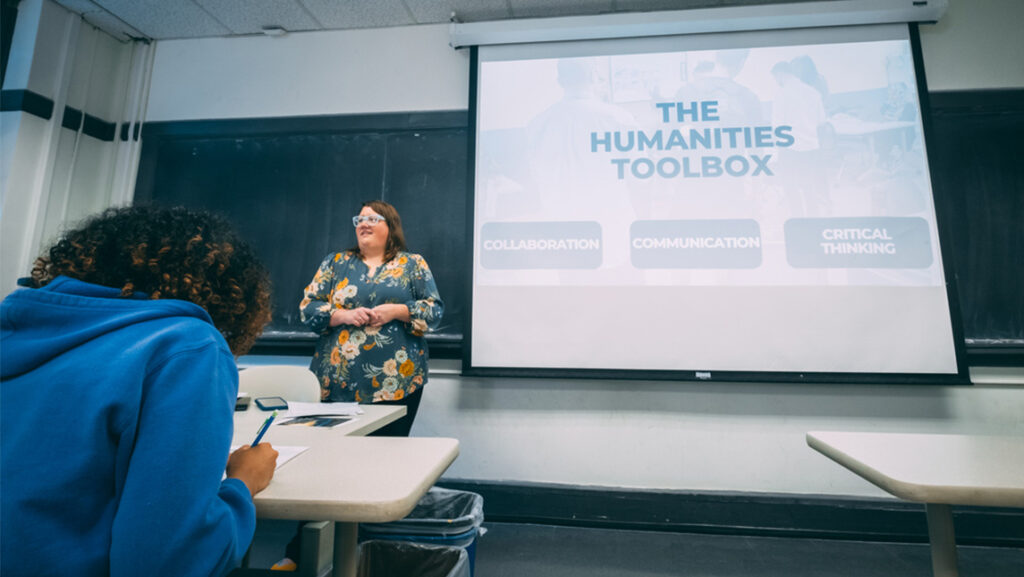This month marks a horrible anniversary. Hurricane Katrina struck New Orleans and the Gulf Coast on August 29, 2005. In recognition of the ruin the hurricane precipitated, The World Meteorological Organization retired the moniker “Katrina,” never to be used again for a storm.
In late August of that year UNCG Sociology professor Dr. Steve Kroll-Smith knew he had to do something. He had been a research professor at the University of New Orleans from 1992 to 2000. His daughter was born there.
As he watched the coverage of the storm and aftermath a decade ago, from the safety of Greensboro, he wanted to be involved. One of his research specialties was disasters.
An emeritus professor from Yale, Kai Erikson, called and said. “Let’s do something.” They joined many faculty members from around the country in New Orleans.
The Bill and Melinda Gates Foundation granted him and two professors from the University of New Orleans $150,000 to look at the long-term impacts of the flooding on two New Orleans neighborhoods, Pontchartrain Park and Hollygrove.
Kroll-Smith and two New Orleans professors professors, Vern Baxter and Pam Jenkins, have just released the results of their 2005-2011 longitudinal study. The book, “Left to Chance: Hurricane Katrina and the Story of Two New Orleans Neighborhoods,” was published by University of Texas Press.
The book examines two African-American neighborhoods wiped out by flooding after the hurricane passed. “As they remind us, our daily life is ‘geographically ordered,’ and they chronicle the disorientation people faced during evacuation, exile and return,” says a review report in The New Orleans Advocate.
Pontchartrain Park is professional and middle-class. Hollygrove is working class. Their research revealed that class difference in these communities mattered. The poorer people had less access to resources and information, often resulting in delays in accessing disaster relief. On the other hand, many of the blue collar Hollygrove residents possessed skills their counterparts in Pontchartrain Park lacked. With their do-it-yourself capability, including electrical repairs, plumbing work, roofing, and so on, many got their houses back in working order more quickly than the residents of, what locals call, “The Park.”
Kroll-Smith and his colleagues noted early on in their work that the term “disaster recovery” could not bear the weight of what they were seeing in both neighborhoods. Recovery is a palliative expression to make you feel better – “as if we recover from disaster,” he says.
The infrastructure did recover. Housing and businesses were rebuilt, for example. But does a person who lives through the total ruin that was Hurricane Katrina recover, existentially? No.
“They did not recover. They changed. They were transformed.” Some had emotional troubles. Some moved away. Some perished. No one they followed over the years returned to a pre-Katrina way of being in the world.
While a lot of the city flooded, the more significant stressor was the actual, official recovery effort, he says. “It was so misshapen; the recovery itself was a disaster.”
He noted in particular five public housing complexes. When the city flooded, all the residents were forced to move out of the complexes, in spite of the fact that only one was damaged by the flood, he says. Residents were given money for one-way tickets out of town; no money was provided for a return trip, he adds; the historic, solid brick housing units were subsequently torn down.
The African-American footprint in New Orleans is now much smaller than before Katrina, he further adds.
Carol Stack, emeritus professor, University of California, Berkeley writes, “This book is important, beautifully written, deeply philosophical and literary. Tragedy and daring and unforgiving social policies are transmitted through the narratives and speak to the reader as if we were there….”
The New York Times Review of Books reviewed it in Sunday’s edition.
A string of UNCG graduate and undergraduate students have worked on this research project with him over the past several years.
Kroll-Smith is currently working on a comparative study of the 1906 San Francisco earthquake and fire and the 2005 flooding of New Orleans. Tentatively titled “A Tale of Two American Cities,” The University of Texas Press will publish this study as well.
Next week: additional UNCG connections with the devastating Hurricane Katrina and aftermath.
By Mike Harris



